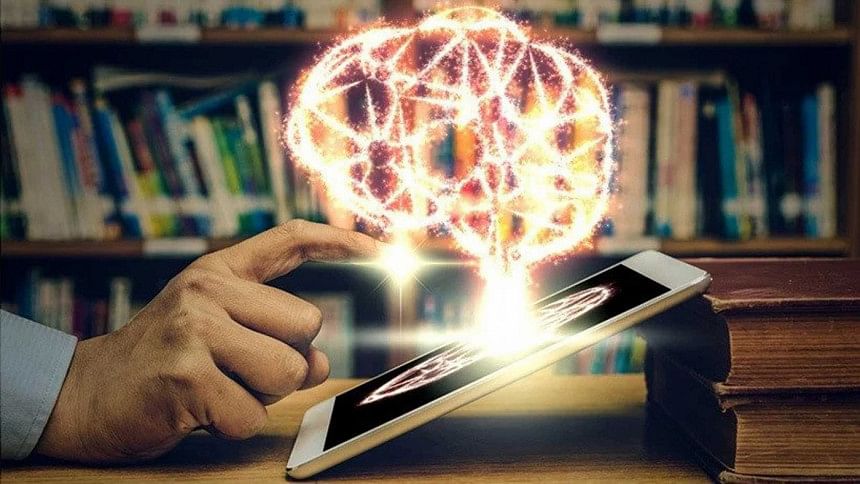How the arts can help make AI better

We need to seriously think about the effective integration of "arts" into our education system. If we want to see ourselves thriving in a world that is rapidly embracing computational interventions such as artificial intelligence (AI), putting equal emphasis on the arts is the only way forward. As societies are becoming more educated, degrees will not be the only licence to success anymore. It's the quality of education that will matter.
In my last piece, "Time to adapt to AI", I argued that Bangladesh should start institutionally thinking about AI. The piece emphasised the supply side of the adaptation process and argued that the government needs to play a pivotal role in this regard. For this, starting from one specific sector, perhaps textile, would be recommended for Bangladesh. Gradual adaptation of AI-based technologies may occur in service delivery, supply chain management, marketing, quality assurance, manufacturing, and even transportation sub-sectors of the industry. However, this can only happen if the demand side of the AI marketplace is knowledge-intensive. AI will thrive in a society that engenders creativity, using education as the key enabler.
For industry 4.0, "knowledge-based society" is the new buzzword. The world is all in favour of teaching kids how to code in computing languages. STEM (Science, Technology, Engineering, and Mathematics) is at the focal point of most of our educational reform processes. However, there are two important things we need to remember. First, STEM helps to understand the world mathematically, rationally, and logically, and those are not the only ways in which humans act. Second, as the developed world leads this revolution, AI-based intelligent interventions are becoming a part of our lives. If we want to keep our culture alive, we will need to help our youths be creative and be aware of their surroundings.
AI is a multi-disciplinary science. Yes, knowing how to code helps. But if we want robots and software to do tasks more efficiently than humans can, we need to have better algorithms. And if we want to have robots that can organise, cooperate, and sacrifice like humans do, we need far better algorithms. The key to devising these algorithms resides in the disciplines that help humans think, understand, and interact with others and in groups. The cases of self-driving cars or assistive robots for the elderly or for differently-abled persons are full of these challenges. Scientists are now learning from sociology, anthropology, the history of science, economics, game theory, dance, music, and fine arts to understand how we behave.
In a few years' time, we will be submerged deeply in more pervasive AI-powered environments. To be able to navigate, we will need to reform our organisations, redesign all our regulatory institutions, re-plan our teaching-learning structures, and reinvent our personal and virtual relations. To ensure we are well-equipped for that future, we will have to switch from STEM to STEAM—the "A" denoting "arts".
Whether we like to hear about it or not, humans are slow. This means that we are meant to walk, pause, devour the beauty around us, and then think. We react to the actions of our surroundings. Nobel Laureate Daniel Kahneman, in his famous book, "Thinking, fast and slow," showed how we behave in different situations. For some reactions, the thinking process is fast, intuitive, and emotional. For others, it is slow, more deliberate and logical. However, holistically, this process of thinking and learning from our surroundings can be done effectively if we are trained to think both rationally and irrationally. Art, literature and music ignite our irrational creative thoughts. They train us to think out of the box, teach us how we can be social, and help us learn social norms and culture. Looking at the waves of the sea after looking at Japanese master Hokusai's "The Great Wave off Kanagawa" would ignite the creative cells of our brain.
Learning about society is not enough, we need to learn to move and love our own bodies, too. Sir Ken Robinson, the famous British author, argued about the importance of being aware of our body. In one of his Ted Talks titled "Do schools kill creativity?", he eloquently explained how traditional education slowly kills the creative minds of children and how art, as an integral part of education, can reverse this process. He argues in favour of putting equal emphasis on teaching dance as we do for mathematics. After all, dance helps us to be aware of the very body we reside in. The arts can prepare us to break barriers and liberate us from the fear of failure. As Sir Robinson said, "If you're not prepared to be wrong, you'll never come up with anything original."
Moreover, learning through art also helps students to learn science better. Brouillette and Graham (2016) conducted research encompassing 55 high-poverty elementary schools in urban California. A curriculum was designed to correct misconceptions and clarify concepts students had struggled with in the past year. The researchers found that integrating arts into the curriculum helped make learning science more memorable. In another work, Anne de Bruin (2018) studied secondary schools in Australia, the USA, Canada, and Singapore. She reported that teachers felt that cross-disciplinary learning shaped critical and creative thinking. Focusing on STEM helps education planners rethink how to teach science and mathematics, emphasises building devices, hones coding skills, and can even initiate robotics programmes in schools which can afford it. STEAM takes these skills to the next level by helping students contextualise, rethink, redesign, wonder, inquire, critique, and innovate.
The world is now set for the inter-disciplinaries. AI scientists need to understand history and art, while historians and artists should understand AI. This communication can be effective only if we are trained to be multi-disciplinary.
Moinul Zaber is a computational social scientist. His Twitter handle is @zabermi

 For all latest news, follow The Daily Star's Google News channel.
For all latest news, follow The Daily Star's Google News channel. 








Comments